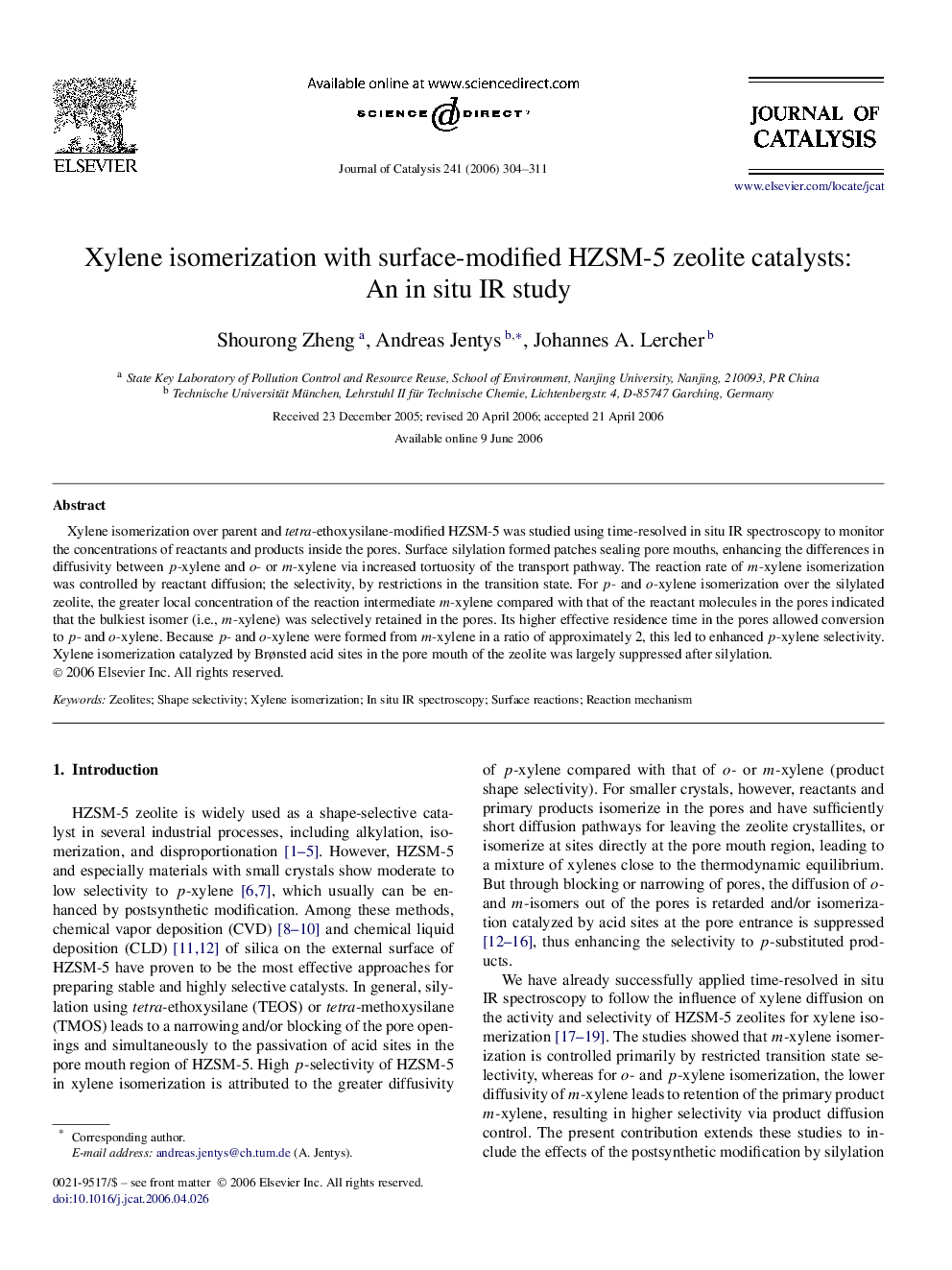| Article ID | Journal | Published Year | Pages | File Type |
|---|---|---|---|---|
| 63101 | Journal of Catalysis | 2006 | 8 Pages |
Xylene isomerization over parent and tetra-ethoxysilane-modified HZSM-5 was studied using time-resolved in situ IR spectroscopy to monitor the concentrations of reactants and products inside the pores. Surface silylation formed patches sealing pore mouths, enhancing the differences in diffusivity between p-xylene and o- or m-xylene via increased tortuosity of the transport pathway. The reaction rate of m-xylene isomerization was controlled by reactant diffusion; the selectivity, by restrictions in the transition state. For p- and o-xylene isomerization over the silylated zeolite, the greater local concentration of the reaction intermediate m-xylene compared with that of the reactant molecules in the pores indicated that the bulkiest isomer (i.e., m-xylene) was selectively retained in the pores. Its higher effective residence time in the pores allowed conversion to p- and o-xylene. Because p- and o-xylene were formed from m-xylene in a ratio of approximately 2, this led to enhanced p-xylene selectivity. Xylene isomerization catalyzed by Brønsted acid sites in the pore mouth of the zeolite was largely suppressed after silylation.
